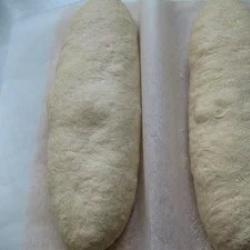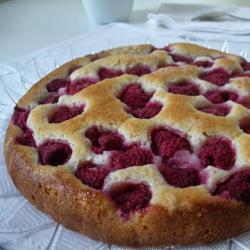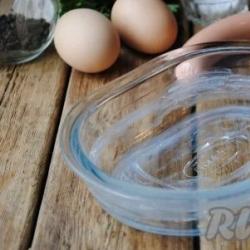Carpet for a doll's house. DIY miniature doll rugs How to make a rug for dolls with your own hands
Happy May day everyone! Perhaps they have already forgotten me? I show up once a month... I'm sorry, I'm lazy... I'm lazy to write, but I'm not able to create. You know how long it takes to write a post, but I miss it sooooo much, and I also have to take pictures of the fruits of my labor, process it, upload it, and all that. In general, I do everything and put it together, but there’s no way to show you everything... But today I decided, otherwise all my cookies will scatter)))
I dabbled a little with crosses here, this is what happened
Four full-sized carpets for a dollhouse and a bunch of pillows for the same purposes.
Tatyana (Bukfa) hi, some of these rugs are made from your threads, thank you very much, you see how useful they were
The size of the rugs is almost the same for all, on average 18*15 cm (+ - cm.)
Only a small beige one is embroidered for the new house in 1:24 scale
(well, you'll find out about that soon)

The pillows are embroidered in pairs, there is a micro-cross, and there is a regular one.
One in a nautical style, two shabby, two with cupcakes - very tasty))), a couple more with vintage roses
 .
.
 .
.

A little about rugs.
All of them except the beige one are embroidered with a tapestry stitch, the beige one is a full cross stitch.
The base is glued with thin non-woven fabric, I crocheted the edges, everything is neatly hidden and does not fray.
How does the process of creating a miniature rug work?
It takes me a week or two to embroider one carpet, it all depends on the complexity of the pattern and the number of colors, and also, if there are a lot of single crosses, then the work becomes even more complicated.
Like, for example, with this Victorian rug...
There are many shades and “singles”, but the more colors, the more colorful and voluminous the pattern is, making the carpet a small masterpiece.

The selection of threads occurs gradually. First, I select the main color for the carpet and consider the rest.
But during the embroidery process it often happens that the selected shade does not suit me or does not suit me, and that’s when creativity begins)))
Sometimes I do "blends" (mixing colors) to achieve what I want.
For example, this chic burgundy carpet.
Red should not be vulgarly bright or gloomy dark, it should be noble. And the light background should not be bright yellow or white; even the slightest mistake in shade does not give a happy result.
Therefore, I select threads only in natural daylight, and I embroider only in it)))
 .
.
 .
.
 .
.

To embroider carpets, I do not use a hoop, but rather sew the canvas to a cardboard frame. So the design is not deformed during sewing and the embroidery does not wrinkle, as in a hoop. For each carpet I make a separate frame depending on the size. embroidery
This is roughly what it looks like (one of the previous processes)...

Another one of the new rugs... Turquoise with flower garlands.
The pattern is quite popular and is often found on the Internet, but it is of very poor quality, therefore, for the convenience of the embroidery process, I had to retype it (every cell) in a special program for creating RM patterns.
However, the previous schemes were also recreated manually (every symbol, every cross). That is, before I embroider, I work out the pattern cell by cell. Let's just say I'm getting acquainted)))
At this stage, you can adjust the circuit to your taste, which is what I do very often)))
 .
.

For example, this beige rug was redone and modified (though already in the process of embroidery). I added a few flowers and dots)))
 .
.

And the next little one is embroidered according to a pattern that I created from scratch.
I needed a certain size and design, so I had to create it myself...
This rug is for a new house that is almost finished.
Target:provide knowledge about the functions and purpose of the carpet as an interior element.
Program content:
1) form dialogical and monologue speech of children of senior preschool age;
2) develop integrative creative abilities through design;
3) provide knowledge about the rules of composition of carpet patterns;
4) the history of the emergence of the carpet as an interior design, its use in Ancient Rus';
5) develop manual skill;
6) cultivate independence in the choice of material and compositional solutions;
7) cultivate accuracy.
Materials used: cardboard, napkins, beads, sequins, ribbons.
Progress of the lesson
Updating knowledge.
- Guys, look, we have a carpet on the floor, and there is a carpet on the wall in the bedroom. Do you have carpets at home?
- Why do you think a carpet is needed? (Children's answers). You are all right.
Story and conversation about carpets.
An ancient man, when he came home to a cave, lay down on bare stones. The wind blew into the open cave. The man was cold. But one day, returning from hunting, he threw the skin on a stone, sat down on it, and felt warm. Then he hung the skin on the entrance to the cave, the wind stopped blowing. And animal skins began to be used as home decoration and as a place to sleep.
Man gradually developed, and his home changed. Instead of skins, carpets began to be hung on the floors and walls. Over time, man invented threads and machines for knitting carpets. Carpets are made from animal hair and threads.
In Rus', homemade runners were used instead of carpets; they were laid on floors, instead of bedspreads. Women wove them from strips of fabric. Later, carpets began to be woven on looms, and various patterns were embroidered by hand. Look how beautiful the carpets are.
— What shapes do carpets come in? (Rectangular, square, oval, curly).
Experimental activities of children.
- Now let's find evidence of my words. What are our houses made of? (Made of brick, stone).
- What is he like? (Cold, hard, hard). Is it nice to hold onto cold walls with your hands? Try the carpet. What is he like? (Warm, soft).
- Now sit down on the stone, is it comfortable? Let's lay down a carpet. Is it convenient now? Warm? So, why do we have carpet at home?
Physical education minute.
- Guys, do you clean the carpet at home? How? Let us imagine how to clean a carpet.
The rug served us for a long time,
Got dusty and sad.
First we'll roll it up
And let's go outside.
We'll hang it there and straighten it out,
We'll beat you with a beater,
Let's leave him hanging
And we'll bring it back.
- Well, we've knocked out the rug, now let's go back to the group. What do you think, do we need carpets in our dollhouse? And if we make a carpet for them, will they be pleased?
A conversation about the rules of composition.
- Now you and I will make carpets for our house. But first, let's remember the rules of composition. The drawing comes from the center, with the main image in the center. And along the edge of the carpet there is a border. What can you make a border from? (Made of paper, ribbons).
— Choose your border. You have already created your sketch with a pencil, now paste the drawing on the pencil. Patterns can be different, but remember that all colors should be different, you need to take contrasting colors. If the background is yellow, there is no need to use yellow for the pattern. Patterns can be geometric, herbal, floral, or plot-based. The pattern in the center is the largest, and the main one extends from it. Look at what materials we have, what can you use to make a pattern? (Flagella, balls, sequins, beads, paper).
— Imagine that you are in a weaving factory and you have to create a beautiful carpet yourself. Think about what materials you will take and where to start. Get started. But first, so that our hands don’t get tired, we’ll stretch them.
Finger gymnastics.
This finger is the strongest, thickest and largest,
This finger is for showing it.
This finger is the longest and it stands in the middle,
This ring finger is the most spoiled one.
And the little finger, although small, is very dexterous and daring.
Independent work of children.
(Children independently choose the necessary materials. Throughout the work, they can come to the table and take any material).
Summarizing.



- Now show me your carpet. What materials is it made of? What patterns are drawn? Well done to all of you, the dolls really liked your carpets.
(During the role-playing game, the resulting products are played out.)
Doll rugs of different sizes.
I have a sea of rugs for a doll's house (well, almost a sea - several dozen). :-) I bought them long before the DeAgostini Dream House collection started. At that time I knew almost nothing about doll miniatures, but I always really wanted to decorate a dollhouse with rugs.
They were bought in the States at auction, the seller was not from America, but it seems from Turkey. Moreover, it cost a penny, three dozen rugs (they are of different sizes, a third are quite large) translated into rubles cost about 1000 rubles (the year was approximately 2010-2011.
Now it turns out that DeAgostini in the Dream House gave out the same rug in one of the rooms, but only one!
The pattern on the carpets is exactly like the real ones; on the reverse side you can see the woven base - an interweaving of the finest threads. I would like the rug not to be made of synthetics, of course, but then the threads would be many times thicker, and it would be impossible to achieve such a detailed pattern.
They look amazing in a doll house.
Realistic miniature rugs can be customized using stickers and contrast flocking. It's easiest to start with a simple rug, as shown in this article, then move on to larger rugs once you're confident with the technique.
This mat has a simple contrasting color design, but you can easily create smaller designs, experience comes with practice.
This is a great method for making seasonal rugs for doll houses. For example, stickers with spiders, owls, bats or pumpkins, eggs and bunnies for Easter, or hearts for Valentine's Day are suitable for Halloween rugs.
The only limitation is the die-cut shape used for the design elements.
Read all steps before you start.
What we need:
- Flock (wool for felting is suitable), as well as stickers and double-sided mounting material - adhesive tape.
- Peel the stickers off the backing, which has a sticky coating. Try to find stickers in the right scale, with thin cut-out shapes.
- Next, you need a material that is sticky enough to hold the flock wool. Mounting tape works well.
- For flocking, choose a fine felting wool that matches your color scheme. Wool colors can be mixed.
- You will need sharp scissors or tweezers, preferably ones with a curved nose, this is most convenient.
- You also need a piece of colored paper. Choose a color that is close to the background flocking.
Let's start by deciding how you will lay out the stickers to form a pattern on the rug. Once you have decided on a design, remove the stickers using tweezers or a pin. Be careful not to touch the sticky backing on the sticker. 
Apply a small amount of flock to a clean work surface. A flexible cutting mat is suitable, then you can return the excess flock/wool to the jar. Place the wool pieces on the rug.
The design can be made more colorful by using multiple colors. You can use bright stickers like oranges, red and yellow, or leaves to make an autumn rug. You can also use unusual flock colors to create modern rug designs.
Cut the backing for the carpet from double-sided mounting tape - about a centimeter larger than the size of the desired rug on all sides, so that you can trim off the excess later.
If you don't have tape, you can use a piece of construction paper (the same color as your flock) with adhesive on it, or just coat it with glue, spray adhesive works well. 
Peel off the protective covering of the tape on one side and save it.
Use tweezers to place stickers, sticky side up, onto sticky backing. Be sure to leave room around the edges for trimming. Simply place the stickers in the desired location by pressing them with tweezers.
Try not to touch the sticky side of the carpet! 
Cover the mat with the protective material you left when you removed the stickers from the backing. If you don't have such a backing, use baking paper or a piece of clear plastic. Use the back of a pair of tweezers or something similar to rub the stickers firmly down into the sticky part of the adhesive-coated paper. If you are not using double-sided tape, try to avoid pressing on the glued areas around the sticker. 
Use tweezers to place a small amount of flock around the previously applied decals, pressing gently to fill the cutouts in the decals with the flock. You can press the flock/wool pile with a spoon. Do not touch with your fingers.
Once you've finished flocking (distributing wool fibers) around the stickers, spread the flock further onto the mat.
Continue flocking the rug, from the sticker design elements to the edges of the rug. It is better to place the rug on contrasting paper. This will help you see where the layer of wool is still thin and where you need to add more lint. 
Continue until the mat is even. Shake off excess flock/wool - fibers that are not stuck.
Perform a final check on your miniature rug before removing it from its backing. If your rug looks great against the background of the floor, you can then cut the rug and use an adhesive layer to secure it in the desired place in the interior of the house.
It is convenient to use colored paper as the back side of the rug: it adds additional color through the translucent wool fibers. The colored paper at the bottom will help hide any stains and imperfections of the rug, and the top will be a real pile.
A paper backdrop will help disguise any areas where fur is missing. But it will not hide the holes in the flocking, so the entire upper part should have flock, even if only a thin layer, with gaps.
To attach the rug to its colored backing paper, peel off the protective layer on the remaining side of the double-sided tape and carefully roll the flocked rug onto the backing paper so that there are no wrinkles. 
Use sharp scissors or a paper cutter to trim the edges of the rug into its final size and shape.
If necessary, you can run a marker along the edge of the paper to mask any difference from the color of the mat to the paper.
You can use stickers in different shapes to create more complex rugs.
Flocking is easier to control on large surfaces than on miniature ones, so larger rugs are made a little lighter than the smallest ones.
Good luck! The technique is simple, it’s more difficult to explain in words than to do, just try it!
Where to buy inexpensive and high-quality doll miniatures?






